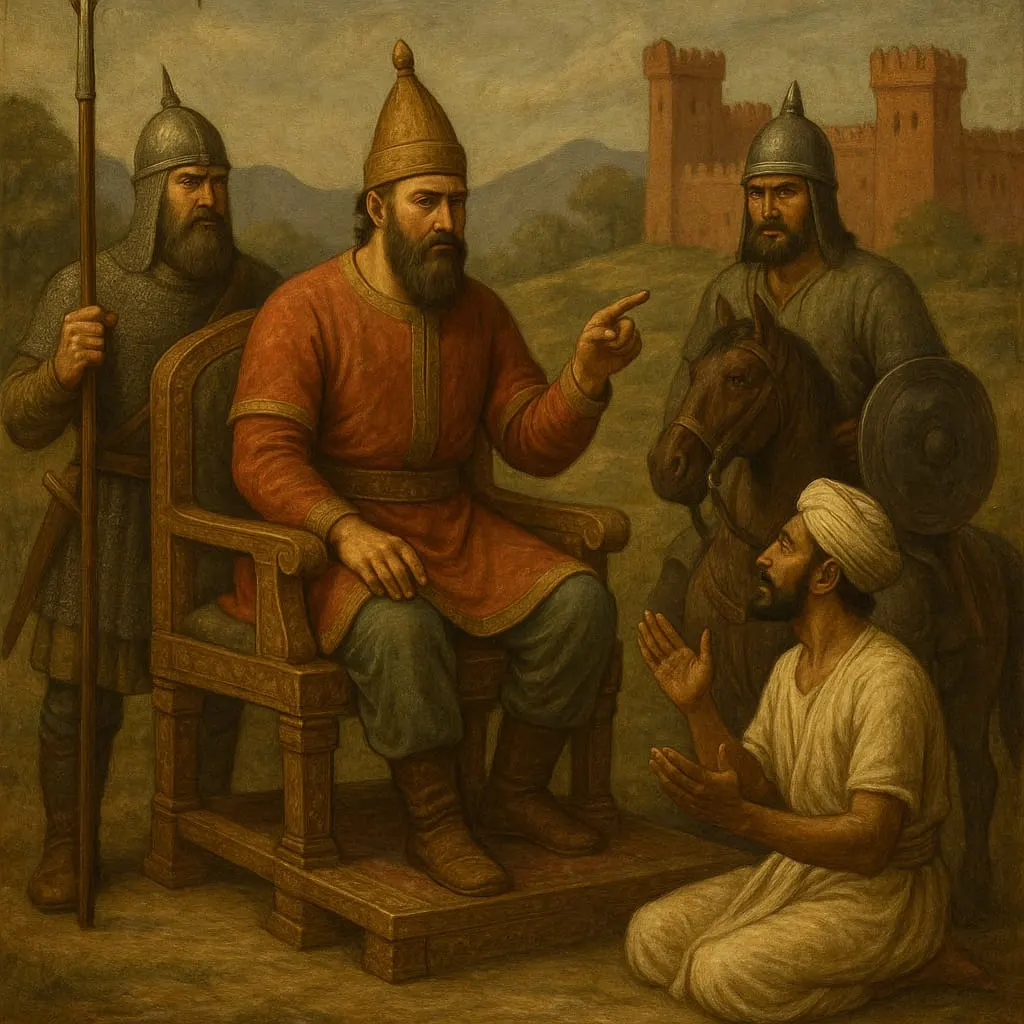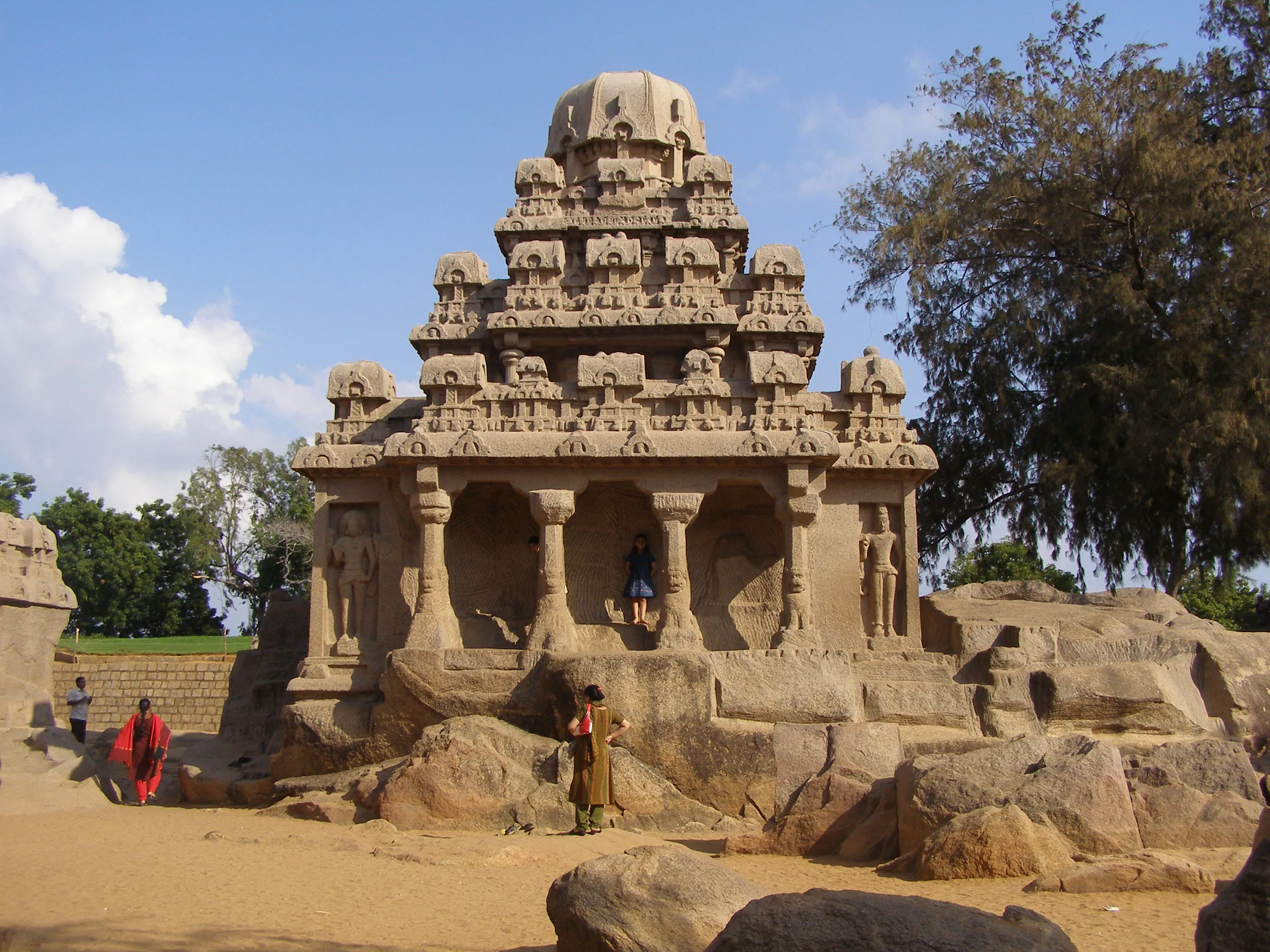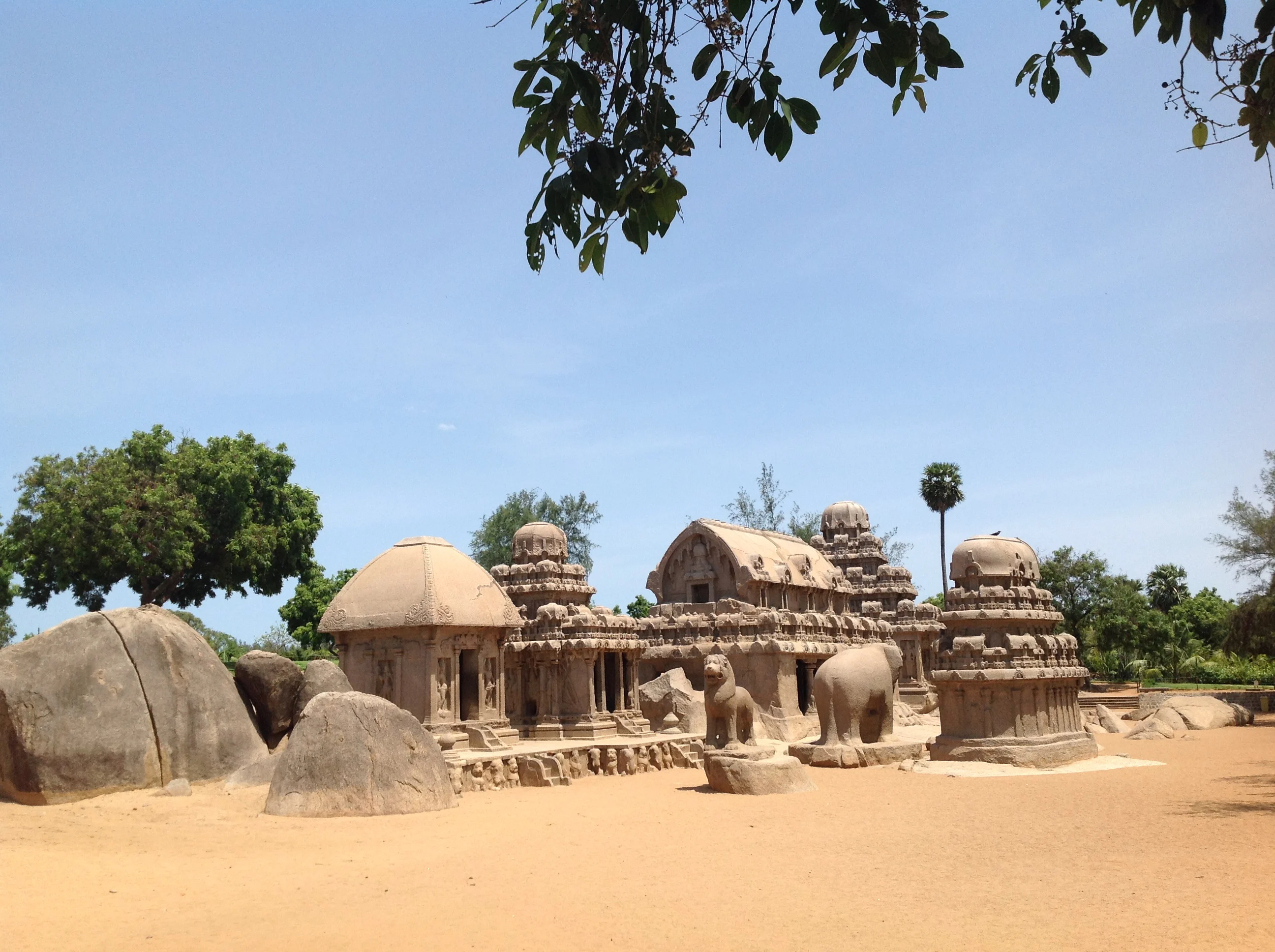SAKA-PAHLAVA KINGDOMS
We have seen in the last chapter that the Sakas replaced the Greeks in Bactria. They did not stay there long, for the pressure from the east was maintained, and very soon after 125 B.C. Bactria was in the hands of the Yueh-chi. There are some indications that the Sakas first tried to move westwards, but their progress in this direction was barred by the Parthian empire, and eventually they passed through Afghanistan and Baluchistan into India. The Parthian power was first established in Khorasan, or north-east Persia, in the third century, when the strength of the Seleu- cids was waning in this region; and it was transformed into an empire by the conquests of Mithridates I (170–138), which extended over the greater part of Persia. There are no precise records of the southward movement of the Sakas, but the most probable account is that, after they were finally repulsed from Khorasan by Mithridates II (123-88), they traversed western Afghanistan into Baluchistan, be- came closely associated with the Parthians in this region, and in union with them turned eastwards, and entered Sind through the passes in the neighbourhood of Quetta. In India they spread southward to the coast, and on into Gujarāt, while towards the north-west they conquered the Punjab.
It appears that about this time the Parthian empire was weakening on its eastern side, for in the first century B.C. the title 'King of Kings,' which denotes independent sove- reignty, was used on coins by a dynasty in eastern Persia, and also by the closely allied dynasty in the Punjab; it is not possible to distinguish these dynasties as either Saka or Parthian, and the only convenient course is to speak of the Indian rulers as Sakas and Pahlavas, the latter name, which is philologically equivalent to' Parthians,' being adopted to distinguish these local elements from the main Parthian power familiar in the history of the West.
The
conquest of the Punjab was made in two steps. About 75 B.C. Gandhara, the
western kingdom, fell to Maues, the first Saka-Pahlava ruler of whom a record
has survived; and about twenty years later his successor, Azes I, conquered the
eastern kingdom of Sialkot. The rule of the Sakas and Pahlavas lasted till about
A.D. 50, when they were overcome by the Kushāns, as will be told in a later
chapter; their dominions included the kingdom of Muttra, but there is no
evidence of extension of their rule further into the Gangetic plain; and, as
might be expected, it left practically no mark on Indian culture.1
The
southward movement produced more durable results, for the Saka kingdom in
Kathiawar, the western portion of Gujarat, was destined to persist in one form
or another for some centuries. Gujarāt adjoins Malwa, and we now return to that
portion of the country, which we left in Chapter IX divided between the Sungas
in the east and the Andhras in the west. About 72 B.C. the Sunga dynasty came
to an end, and the Andhras appear to have come into possession of their territory,
and, as rulers of the whole of Malwa, to have become involved in a long-drawn
struggle with the Sakas. There is precise evidence of this struggle only from
about the year A.D. 100 onwards, but it seems impossible to reject entirely the
legends which relate to the earlier period, and which introduce us to the name
of Vikramaditya (' Sun of power'), one of the outstanding figures in Indian
tradition. One of these legends is to the effect that an oppressed faction in
Ujjain asked the Sakas of Gujarāt for help against the Andhra despot: the Sakas
defeated the despot and occupied Ujjain on their own account; Vikramaditya, the
despot's son, then gathered forces in the country to the south, and drove the
Sakas out. The approximate date of these events is fixed by the attribution to
him of the For a different view of the Pahlava influence on Indian culture, see
Dr. Vogel's remarks at. p. 145 of Revealing India's Past (London, 1939).
Vikrama era, which is reckoned from 58 B.C., and which obtained a very extensive vogue in northern India. It must be recognised that the name Vikramaditya was borne by many rulers at various times, and one of them was the Gupta Emperor who, more than four centuries later, finally crushed the Saka power; the acts of all the various Vikramadityas seem to have been fused into one cycle of legends, and it is possible that this story may be merely an echo of the Gupta achievement, but it is perhaps more probable that there is a nucleus of fact, and that the struggle between Andhras and Sakas actually began in the middle of the first century B.C.
EARLY COMMUNICATIONS BY SEA
WITH
the arrival of the Sakas in Gujarat, we come into contact for the first time
with that portion of the Indian seaboard which forms the natural doorway to the
West, and it will be well to summarise at this point the scanty know- ledge we
possess of the beginnings of communications by sea. Discoveries at Mohenjo-daro
prove that there was intercourse between the Indus plain and Mesopotamia in the
third millennium and perhaps earlier; it is not yet cer- tain whether
communication took place by land or by sea, but the use of the latter route is
considered by some autho- rities to be possible, or even probable.
The occurrence of the Sanskrit word for 'ocean' in the hymns of the Rigveda has led some authorities to infer that the Aryans of that period had reached the coast, and even engaged in extensive navigation, but others hold, with perhaps greater probability, that in those days the word denoted only the Indus, and that the meaning' ocean' was acquired in later times. If the latter view is correct, it is possible that the earliest mention of sea-communication with India occurs in some familiar passages in the Old Testament 1 describing the commercial activities of Solomon in the tenth century. Nobody reading the English version of these passages would see the connection, and it is impos- sible to state in a few words the arguments which have induced various commentators to infer that at this period some Indian curiosities-peacocks and possibly monkeys and, less probably, some raw materials-gold, ivory, and sandalwood--were brought up the Red Sea in Phoenician and Israelitish vessels. Accepting their conclusions, the question whether there were Indian ships at this time depends on the location of Ophir, the southward destination of the Phoenician fleet. This question has not yet received a final answer. If, as has often been argued, Ophir lay at the mouth of the Indus 3, then there would be no reason to infer the existence of Indian sea-going vessels; but if, as appears to be more probable, it was somewhere on the south- east coast of Arabia, then there is at least a suggestion that the coasting-trade between Arabia and India had already been established.
There is somewhat better, evidence for sea-transport between India and the Persian Gulf in the seventh and sixth centuries B.C. It is known that Sennacherib of Assyria (c. 700 B.C.) placed on the Gulf a fleet built by Phoenician shipwrights brought from the Mediterranean, and that a little later there was intercourse by sea between the Euphrates and the coast of China; the inference is obvious that the ships must have called somewhere in India during these long voyages. Other facts belonging to the sixth century suggest that shipping had developed between the west coast of India and Babylon, then the great mart of the world; but so far the indications are that the ships belonged to the latter region rather than India.
THE PERSIAN GULF AND THE RED SEA
they
were constructed on the Indus by foreigners from Persia or further west. It is
not possible, then, to say when sea-going ships began to be built on the
western side of India. The early Buddhist literature shows incidentally that
shipbuilding was practised, but it gives no clue as to dates; the texts are
indeed later than 500 B.C., but they incorporate some older stories, and all
that we really know is that Indians used the sea freely in the centuries
between the foundation of Buddhism and the Christian era, and that they made
coasting voyages to Ceylon and other neighbouring countries there appears to be
no clear evidence that in the earlier days they sailed the open sea. We know,
however, that ship-building was well established on the Indus by the time of
Alexander, because he was able to procure the large number of vessels on which
a portion of his army embarked for the Euphrates.
From
the third century B.C. onwards, the trade of the Red Sea was systematically
developed from new seaports established in Egypt, and Indian goods reached the
Medi- terranean by this route, but there was no direct shipping; the goods were
bought at Mocha or Aden, or at other places near the Straits of Babelmandeb,
and we do not know defi- nitely how they reached those ports, but probably by
this time the voyage across the Arabian Sea was being regularly made by Indian
ships. Our precise knowledge of this com- merce dates only from a few years
before the Christian era. Augustus, the first Roman Emperor, devoted much
attention to the Red Sea trade, a taste for Indian luxuries developed in Rome,
and Alexandria quickly became the centre of com- mercial intercourse between
East and West. We know that at this time Indian vessels sailed regularly into
the Persian Gulf and to the Straits of Babelmandeb, but they were excluded from
the Red Sea by the local owners, who asserted a monopoly of those waters. This
monopoly was broken in the time of Augustus by Egyptian ships, manned by Greek
crews, which sailed down the Red Seà, and at first coasted to Indian ports;
then, about the middle of the first cen- tury A.D., the new-comers learned the
secret of the seasonal winds, and began to sail direct from the Straits to the
mouth of the Indus,3 to Broach on the
Narbada, to the pepper ports of Malabar, and even to the east coast.
The
result was a remarkable expansion of Indian trade, carried almost entirely by
foreign ships, an expansion com- parable in some ways to that which was to
occur in the seventeenth century. The chief exports were pearls and precious
stones, pepper and other spices, drugs, materials such as ivory and ebony, fine
muslin, and a long list of curiosities-almost entirely a luxury trade. Imports
con- sisted mainly of base metals, coral, and some western luxuries, and the
large balance was settled in gold and silver, constituting a drain of coin and
bullion eastwards which alarmed Roman financiers. This direct trade lasted for
about two centuries; then the Egyptian effort failed, and the declining
commerce returned to the old channels, Indians bringing goods to the mouth of
the Red Sea, and selling them to the Arabs for transport further north4."
Our knowledge of the development of shipping on the east coast is exceedingly scanty. It is clear from European sources that when the Egyptian ships first rounded Cape Comorin, there was already an active coasting-trade from Ceylon to the Ganges, and that Indian vessels of considerable size crossed the Bay of Bengal to Sumatra and the Malay Peninsula, but there are no records to show for how many centuries this had been going on, or what were the main staples of the trade. All that can be said with confidence is that Indian-built ships, with Indian crews and Indian merchants, had been busy in these waters for an indefinite period before the Christian era.
Reference
- Kings, ix, x;
- Chronicles, viii, ix.
- Changes in the Indus mouths have given a long succession of ports in this region, one after another emerging and disappearing without leaving any precise record. Alexander found a city named Pattala. In Roman times the port was called Barbaricon. Moslems knew successively Daibal or Diul, Läharl-bandar, and Shāh-bandar; it was only in the eighteenth century that Karachi emerged, not actually in the delta, and so exempt from its vicissitudes,
- A detailed account of the Roman trade will be found in E. H. Warmington's The Commerce between the Roman Empire and India (Cambridge, 1928).







